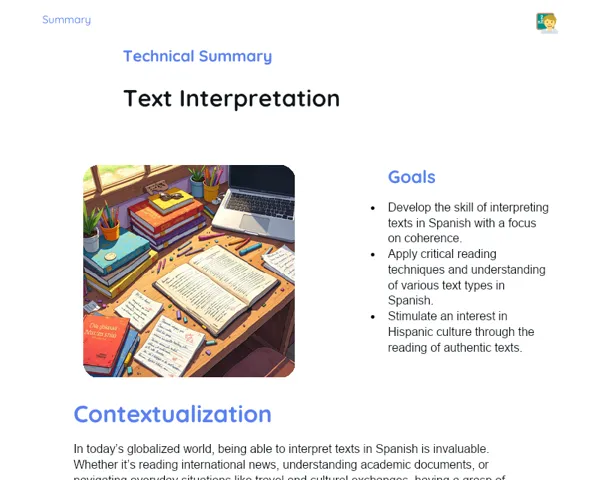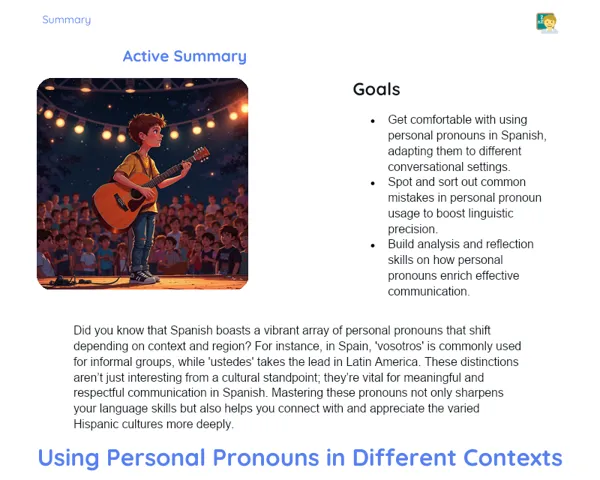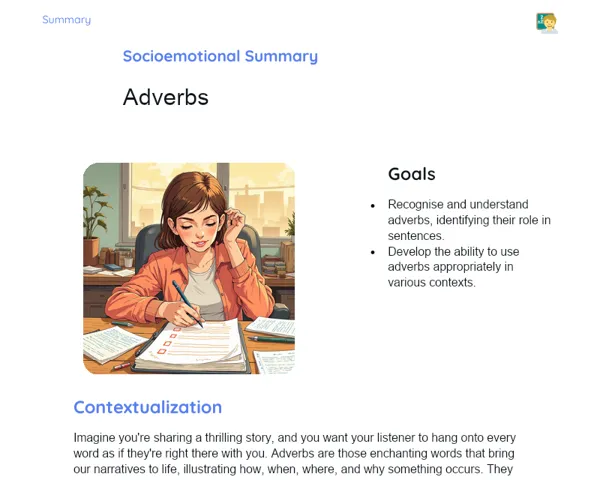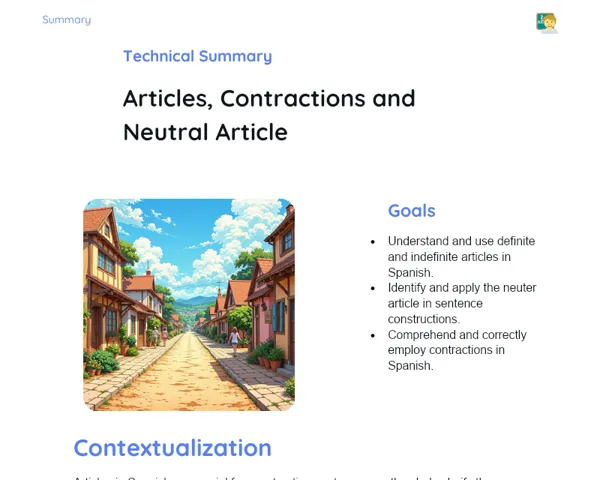Goals
1. Understand the verb forms of the imperfect and perfect subjunctive.
2. Identify and classify verbs in these tenses across various sentences.
3. Apply the knowledge gained in practical activities and real-world situations.
4. Develop skills for grammatical analysis in diverse texts.
Contextualization
Studying the subjunctive verb tenses in Spanish, particularly the imperfect and perfect subjunctive, is key to crafting more sophisticated and precise writing. These tenses are often used to convey wishes, hypotheses, and uncertain past situations, which are essential for storytelling and formal communication. For instance, in a discussion about past events that did not occur, such as 'If I had known, I wouldn't have come' ('Si yo hubiera sabido, no habría venido'), or expressing wishes and uncertainties like 'I wish you had been there' ('Ojalá tú hubieras estado ahí'). Understanding these verb forms enables students to articulate their thoughts more clearly and appropriately in various contexts, both academic and professional.
Subject Relevance
To Remember!
Imperfect Subjunctive Verb Forms
The imperfect subjunctive in Spanish is used to describe hypothetical situations, wishes, or uncertain conditions in the past. It is formed by taking the third person plural of the simple past indicative, stripping the -ron ending and adding the corresponding endings: -ra, -ras, -ra, -ramos, -ráis, -ran.
-
Expresses hypothetical past situations: 'If I had money, I would buy a house.' ('Si yo tuviera dinero, compraría una casa.')
-
Used in conditional phrases: 'If he studied more, he would get better grades.' ('Si él estudiara más, sacaría mejores notas.')
-
Can express desires: 'I wish you were here.' ('Ojalá estuvieras aquí.')
-
Formed from the third person plural of the simple past indicative: 'tuviera' comes from 'tuvieron.'
Perfect Subjunctive Verb Forms
The perfect subjunctive refers to actions that have been completed before a certain point in the present, future, or past. It is created with the auxiliary verb 'haber' in the perfect subjunctive (haya, hayas, haya, hayamos, hayaís, hayan) followed by the past participle of the main verb.
-
Used to indicate completed actions: 'I'm glad you've finished the work.' ('Me alegra que hayas terminado el trabajo.')
-
Constructed using the verb 'haber': 'haya, hayas, haya, hayamos, hayaís, hayan.'
-
Used in contexts involving doubt, desire, or emotion: 'It's possible they have already arrived.' ('Es posible que ya hayan llegado.')
-
Crucial for expressing past actions that matter in the present: 'I hope you understood it.' ('Espero que lo hayas entendido.')
Differences and Similarities Between the Two Verb Tenses
While both tenses are employed within the subjunctive mood to express uncertainties, hypotheses, and wishes, they primarily differ in the timing of the actions they describe. The imperfect subjunctive relates to uncompleted or hypothetical past actions, whereas the perfect subjunctive pertains to actions completed prior to a reference point.
-
Imperfect Subjunctive: indicative of hypothetical or uncompleted actions in the past.
-
Perfect Subjunctive: represents completed actions relevant to a reference point.
-
Both serve in contexts involving doubt, desire, or emotions.
-
The key difference lies in the timing of the action conveyed.
Practical Applications
-
Translation and Interpretation: Professionals in these fields need to grasp and apply these verb tenses accurately to preserve the clarity and exactness of their translations.
-
Diplomacy: In negotiations and diplomatic correspondence, the correct usage of subjunctive verb tenses can avert misunderstandings and clarify intentions.
-
Journalism: Journalists reporting in Spanish must utilize these tenses to depict past events accurately and convey opinions and hypotheses correctly.
Key Terms
-
Imperfect Subjunctive: A verb tense employed for hypothetical or uncertain past situations, wishes, and conditions.
-
Perfect Subjunctive: A verb tense that addresses actions completed before a certain time in the present, future, or past.
-
Subjunctive: A verbal mood indicative of desire, doubt, uncertainty, hypothesis, and emotion.
Questions for Reflections
-
How does mastering the subjunctive verb tenses influence clarity and precision in communication in Spanish?
-
In what ways can you incorporate the imperfect and perfect subjunctive in your own storytelling or formal communications?
-
What challenges do you face when using these verb tenses, and how can you work through them?
Creative Writing Challenge: Hypothetical Narrative
Create a brief narrative that effectively employs both the imperfect and perfect subjunctive, showcasing hypothetical scenarios or past wishes.
Instructions
-
Break into groups of 3 to 4.
-
Select a theme for your narrative (e.g., a trip, job interview, historical event).
-
Compose a narrative including at least five sentences that use the imperfect subjunctive and five with the perfect subjunctive.
-
Review the narrative within your group.
-
Present the polished narrative to the class, focusing on the correct application of the verb tenses.



